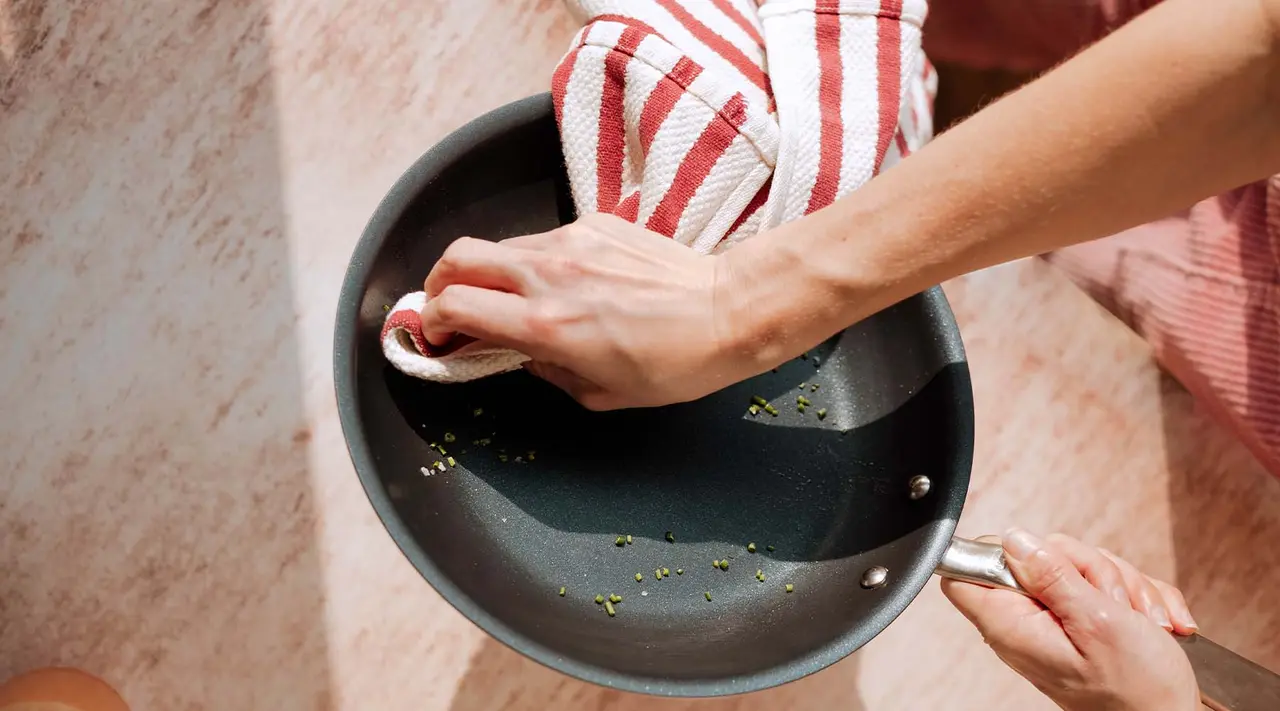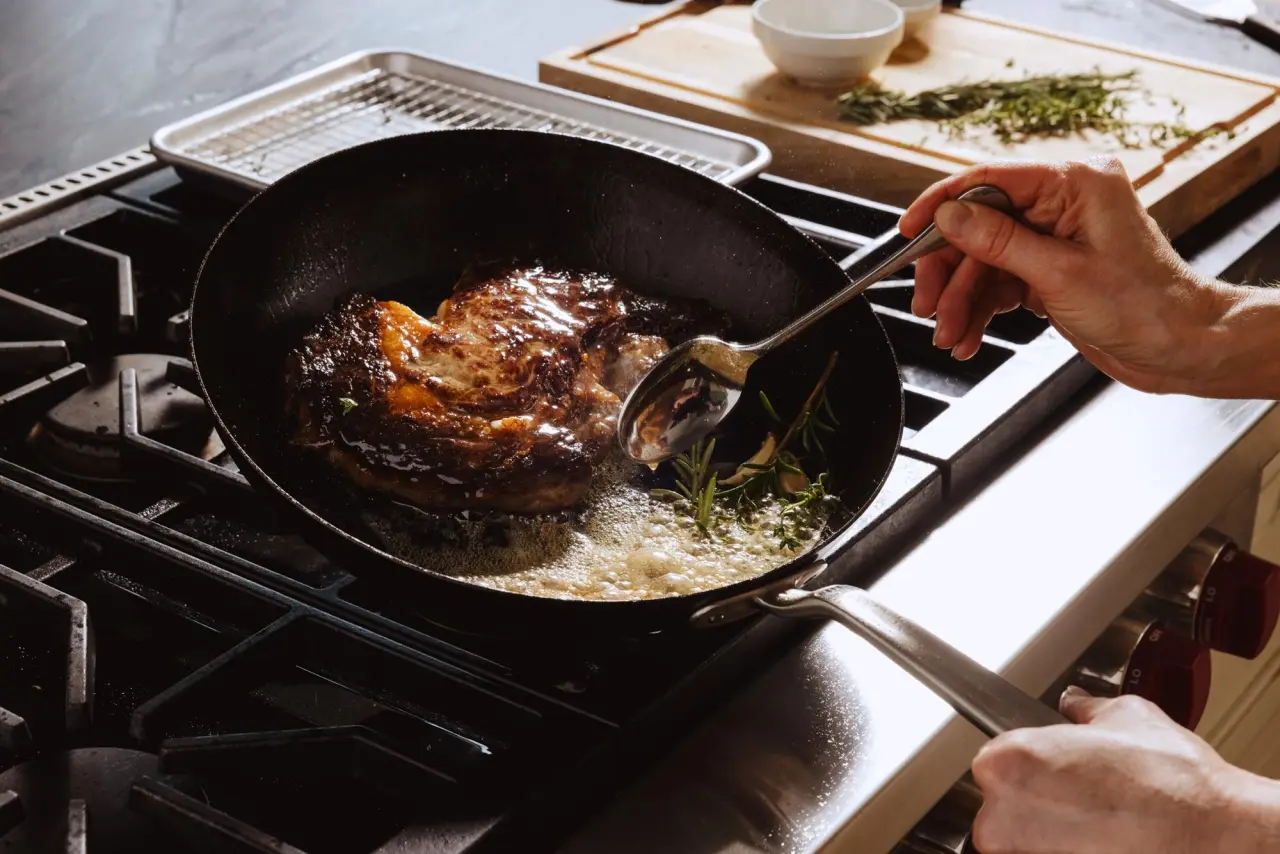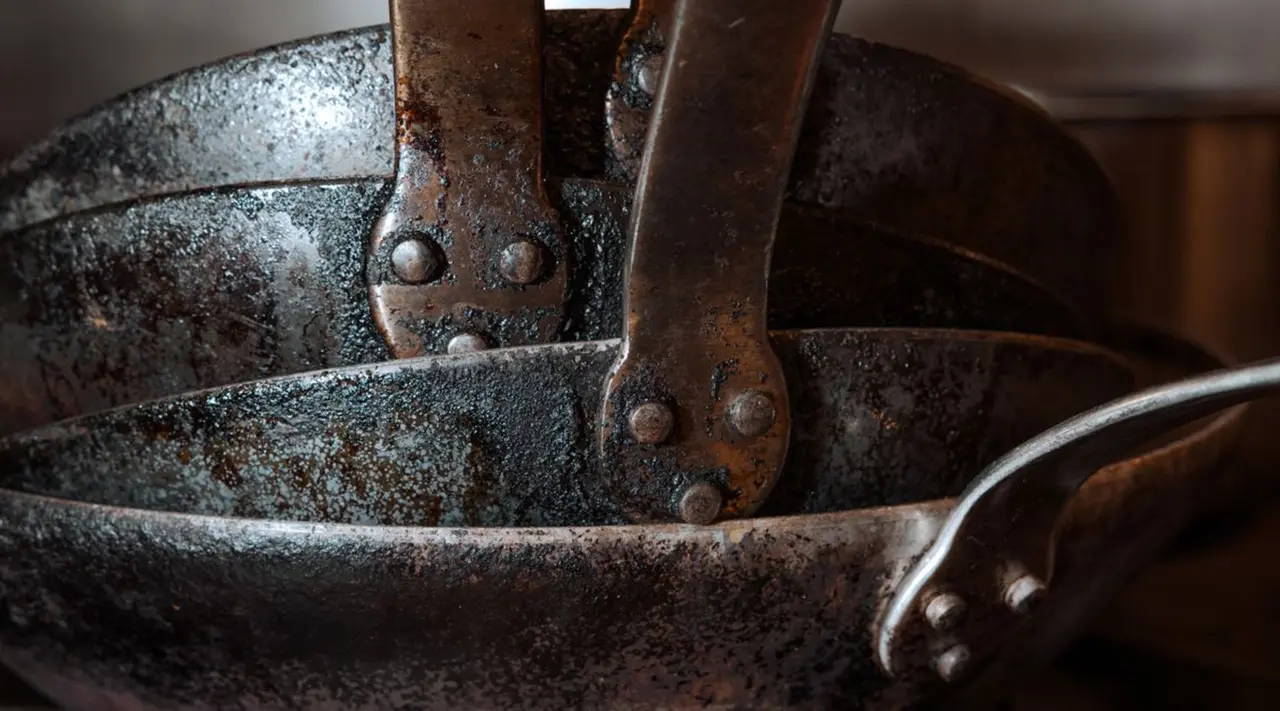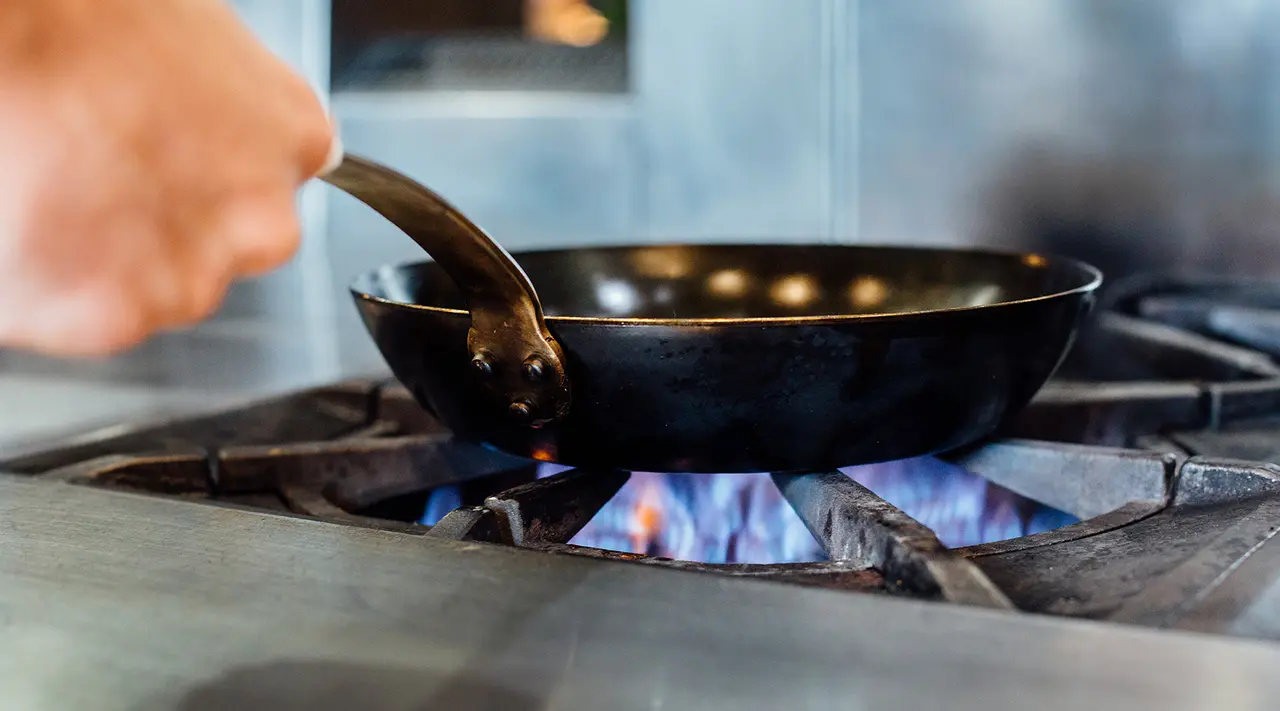Even with workhorse construction like our ProCoat Non Stick, coated cookware still requires care in order to help it perform its best and last as long as possible. Since most non stick collections are generally not dishwasher-safe, you’ll need to know how to properly hand wash without damaging or warping the coating.
Here, we’ll cover some of the do’s and don’ts of cleaning your favorite piece of non stick cookware, along with tips for tackling different degrees of mess. Note that these guidelines are for our ProCoat Non Stick line—our CeramiClad Non Stick has its own cleaning and care tips.
Level 1: Used Pans
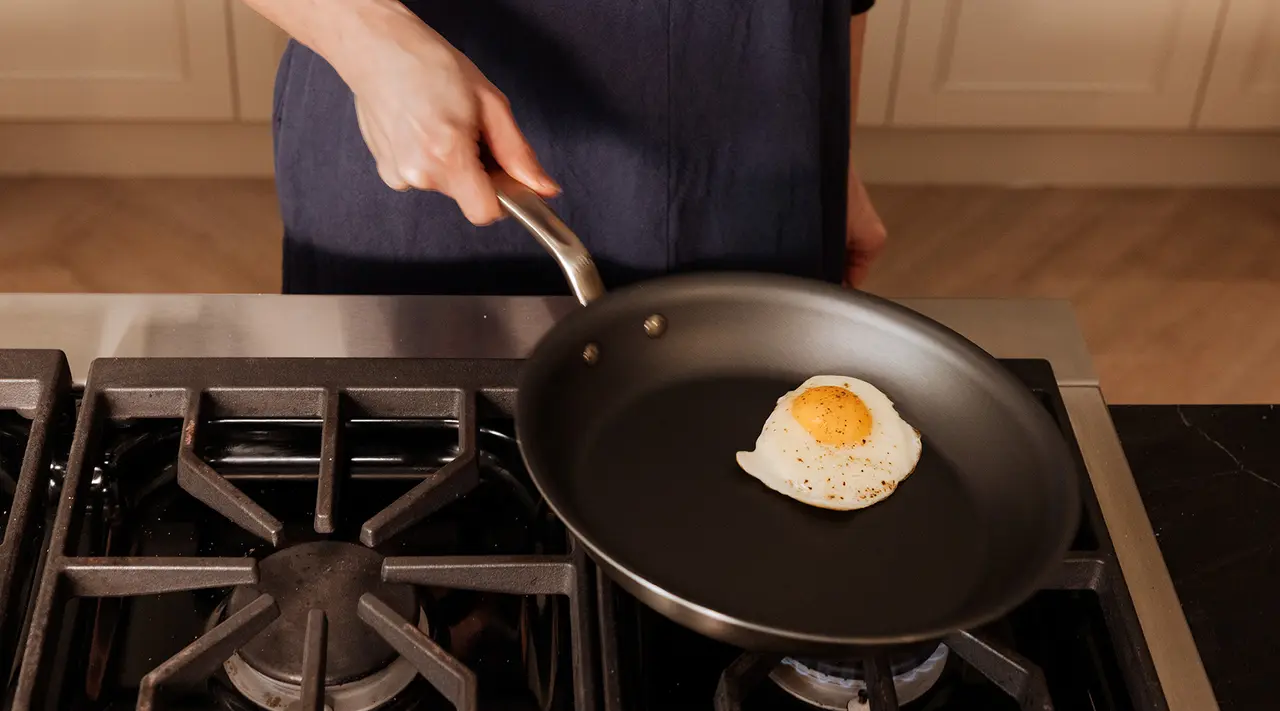
If your non stick pot or pan is relatively new, or you’ve done a good job of maintaining it, you probably won’t need to do much to get (and keep) it clean. That’s especially true for pans that are just slightly dirty from everyday use—i.e., pans that still have just a bit of leftover oil or food residue on them.
Step One: Let it Cool
This is a crucial step—wait for your pan to cool down before you try to clean it. Running a hot pan under cool water can cause thermal shock, which can warp your pan, create an uneven cooking surface, and potentially damage the non stick coating.
Step Two: Wipe it Down
Rinse your pan with warm water and wipe with a soft, dry sponge or dish brush to remove as much food and oil residue as possible before scrubbing. If you're dealing with a bit of stubborn residue, let soak for 5-10 minutes with just enough water to cover the bit that won't come off.
Step Three: Scrub Gently
Apply a few drops of a gentle dish soap to the sponge or brush, then carefully scrub the inside of the pan to remove any lingering food, grease, or oil.
Step Four: Dry and Put Away
Dry your pan with a paper towel or clean dish towel before putting it away. If you choose to stack your pans, make sure to place a Pan Protector, dish towel, or other non-abrasive cloth in between them to prevent scratching.
Level 2: Burnt Pans
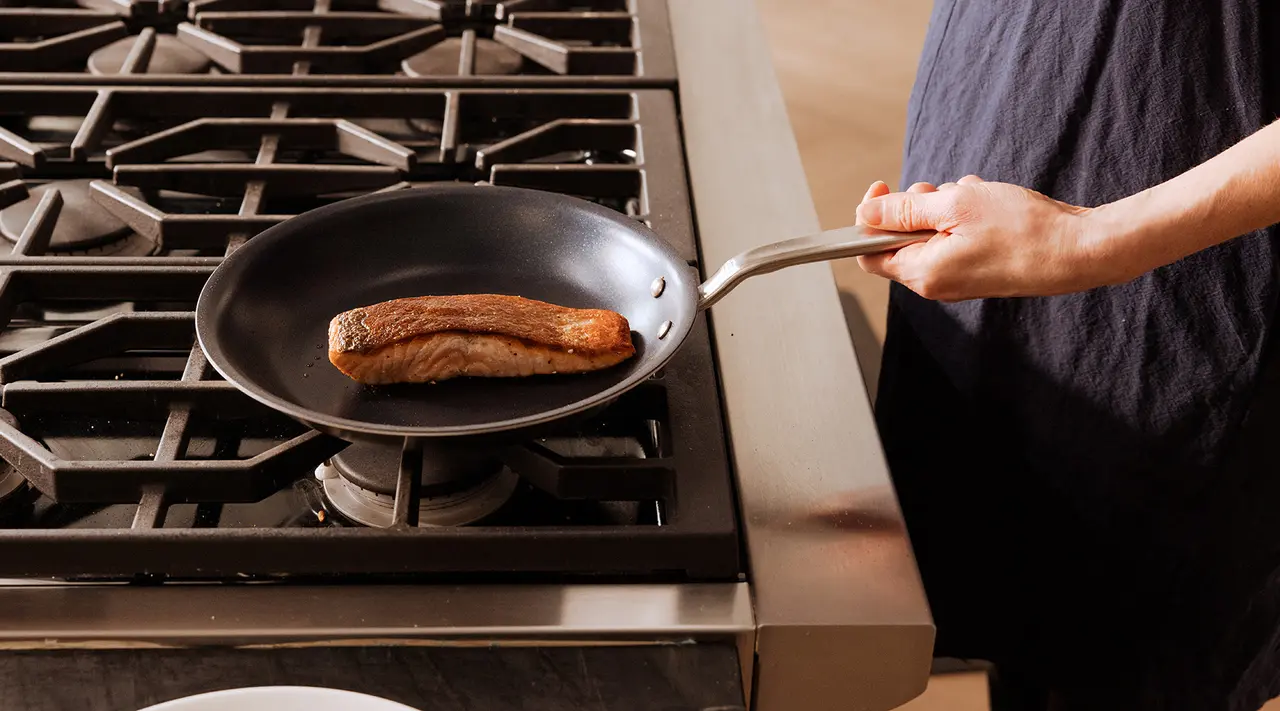
A burnt pan is one that has either been overheated (meaning that it’s been left over high heat for too long with food or oil in it) or one that has been dry heated (meaning that it’s been left on the heat for extended periods of time without anything in it). No matter which way it got burnt, this is a more hands-on cleaning than
Cleaning burnt non stick pans is a tad trickier than cleaning regular dirty pans, but you can usually get the job done just as fast with a solution of water, baking soda, and vinegar.
Step One: Mix and Heat Your Solution
Wipe your pan, then add enough water to cover the bottom along with two tablespoons each of baking soda and vinegar. Bring the mixture to a boil, stirring gently with a wooden spoon or other non stick-friendly utensil.
Step Two: Scrape Gently
Allow the mixture to boil for about five minutes. While it’s boiling, use your non-metal utensil of choice to carefully scrape along the bottom and sides of the pan. This should remove all or most of the burnt-on bits.
Step Three: Cool and Rinse
Allow your pan to cool down completely before dumping out the liquid. Wash with warm soapy water, then dry completely before putting away.
Level 3: Discolored Pans

All pans will start to develop some light discoloration over time, which is an indication that it’s well-used and is—generally—nothing to worry about. However, serious discoloration could indicate that the non stick coating has begun to degrade, and your pan won’t be able to do its job properly.
You can try removing some of the discoloration using the water, vinegar, and baking soda solution mentioned above—if this doesn’t work, it might be time to invest in a new pan.
Additional Tips for Maintaining Non Stick Cookware
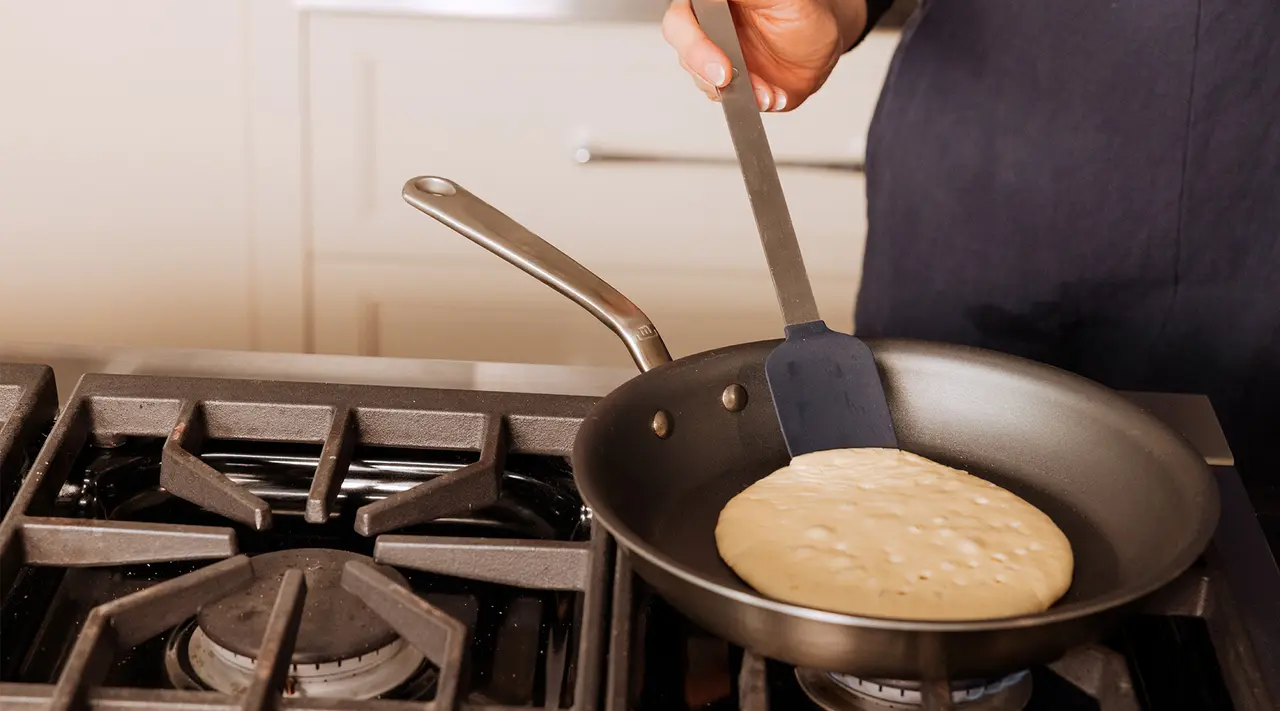
Now that you’ve got the basics down, here are a few extra tips for safely and easily using, cleaning, and maintaining your non stick pans.
Use Soft Utensils
Like we mentioned above, it’s important to only use non-abrasive tools when cleaning or cooking with your non stick cookware. This is because the coating that allows your omelets and fish filets to slip around with ease also has a tendency to scratch. Surface-level scratches are nothing to worry about, but deeper ones can expose the metal underneath and cause permanent damage to the pan’s non stick capabilities.
Avoid scratching by using tools made of wood, nylon, or silicone on your non stick cookware, and avoid anything made of metal.
Clean After Using
Another important part of caring for your non stick cookware involves cleaning it quickly after you cook with it. Food is more likely to stick if it sits in the pan for a long period of time, which can cause the coating to quickly degrade.
Follow Manufacturer Cleaning Instructions
While most non stick cookware is hand wash-only, some brands claim that their cookware is dishwasher-safe. Make sure to only put your cookware in the dishwasher if it’s recommended by the manufacturer—though we’d still always recommend hand washing to prolong the life of your cookware.
Ready to Shop?
With regular care and cleaning, your pots and pans can serve you well in the kitchen for years—especially if they feature our 5-Ply Stainless Clad construction.
Our ProCoat Non Stick Cookware Collection begins with our Award-Winning Stainless Clad, and is improved with multiple layers of professional-grade Non Stick coating. It’s a high-performing and incredibly durable addition to your kitchen—maybe now you can work on nailing that perfect French omelet.
